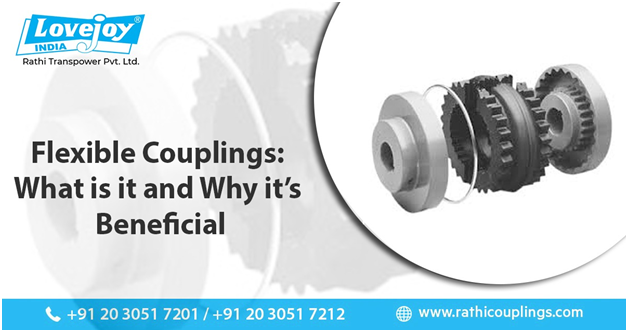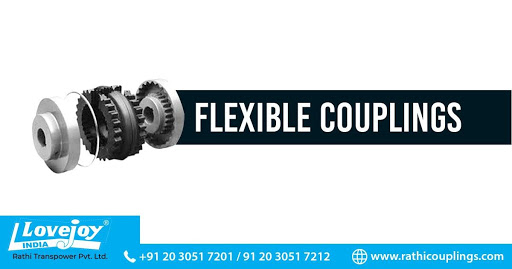

Flexible couplings are utilized to transmit torque starting with one shaft then onto the next when the two shafts are marginally misaligned.
Flexible couplings can oblige fluctuating degrees of misalignment up to 3° and some parallel misalignment. Likewise, they can also be utilized for vibration damping or noise reduction.
A coupling intended to permit a constrained precise movement between the axis of two waveguides.
Why are flexible couplings?
A flexible coupling exists to transmit control (torque) starting with one shaft then onto the next; to make up for minor measures of misalignment; and, in specific cases, to give protective functions.
Thus, industrial power transmission regularly calls for adaptable as opposed to rigid couplings.
At the point when the opportunity arrives to indicate substitutions for flexible couplings, it’s human nature to take a simple way and just discover something comparable, if not identical, to the coupling that failed, possibly applying a couple of larger than average fudge components to be moderate.
Too often, however, this training welcomes a repeat disappointment or costly system damage.
The wiser methodology is, to begin with, the assumption that the past coupling failed because in light of the fact that it was the wrong sort for that application.
Taking time to decide the correct kind of coupling is worthwhile even if it confirms the past design.
However, it may lead you to something very surprising that will work better and last more.
In simple words, it can be said Flexible couplings are used to transmit torque from one shaft to another when the two shafts are slightly misaligned.
In this example, the test fixture is using a torque transducer as torque senor for measuring torque. In this example, the flexible couplings are used to connect the motor and torque sensor with the workpiece.
These two couplings need to minimize any misalignment error since the torque sensor needs to lay as flat as possible. They also need to protect the sensor from overloading.
Major characteristic of the flexible couplings are very low or zero backlash, good torsion rigidity as good lateral and angular misalignment capabilities making them suitable for various applications.
Read More: Disc Coupling Manufacturer: Why Rathi Couplings is the Best!
Estimating and choice
The rich variety of accessible flexible couplings gives a wide scope of execution tradeoffs. While choosing among them, oppose the compulsion to exaggerate administration factors.
Coupling administration factors are planned to make up for the variety of torque loads typical of various driven systems and to accommodate sensible service life of the coupling.
Whenever picked too moderately, they can misguide choice; raise coupling expenses to pointless dimensions, and even welcome damage somewhere else in the system.
Keep in mind that properly chosen couplings more often than not should break before something progressively costly does if the system is over-burden, inappropriately worked, or some way or another drift out of spec.
Deciding the correct sort of adaptable coupling begins with profiling the application as pursues:
• Prime mover type-electric engine, diesel motor, other
• Real torque requirements of the determined side of the system, as opposed to the rated horsepower of the prime mover – note the scope of variable torque coming about because of cyclical or erratic loading, “assuming the worst possible scenario” startup loading, and the measure of beginning quit switching action basic common during normal operation
• Vibration, both linear and torsional
• Shaft sizes, keyway sizes, and the desired fit among shaft and bore
• Shaft-to-shaft misalignment
• Axial (in/out) shaft movement, distance, and some other space-related limitations.
• Ambient conditions
Read More: What is Rigid Coupling and its Applications?
In any case, even after these fundamental specialized details are identified, other selection criteria ought to be considered:
Is the simplicity of getting together or establishment a thought? Will maintenance issues, for example, lubrication or periodic review be adequate?
Are the elements field-replaceable or does the entire coupling must be replaced in case of a disappointment?
How inherently well-adjusted is the coupling structure for the speeds of a specific application?
Is there kickback or free play between the parts of the coupling?
Can the equipment tolerate much reactionary burden forced by the coupling because of misalignment?
Keep in mind that each flexible coupling configuration has qualities and shortcomings and related tradeoffs. The key is to discover the structure most appropriate to your application and budget.
Applications:
At first, flexible couplings separate into two essential groups, metallic and elastomeric.
Metallic types utilize freely fitted parts that roll or slide against one another or, on the other hand, non-moving parts that bend to take up misalignment.
Elastomeric types, then again, gain flexibility from resilient, non-moving, elastic or plastic elements transmitting torque between metallic hubs.
Read More: Applications of Spider Star Jaw Couplings
Types of Flexible Couplings:
Most little to medium size couplings are fundamentally one of three kinds.
Universal Joints
A general joint is a linkage comprising of two yokes, one on each shaft, connected by the spider. Since universal joints are much of the time utilized, a different segment is given to them following this segment.
Lovejoy Rathi Couplings are the leading manufacturers in gear coupling and the best disc coupling manufacturer delivering high-quality couplings for the market.

nice information
Thank you for info
Nice one
Thank you for sharing such a nice info
nice
thank you for sharing valuable information